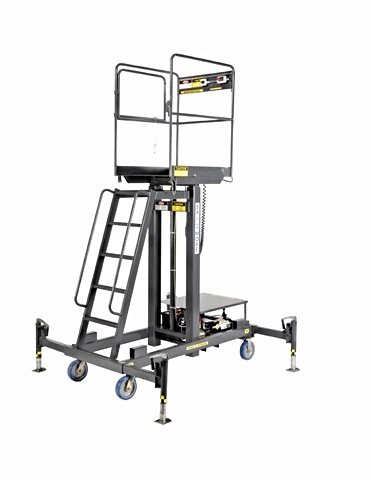24/7 Lift Maintenance Repair: Trigger and Efficient Solution
Wiki Article
Pro Tips for Maintaining Your Lift in Top Problem: A Comprehensive Review
Making certain the ideal functioning of a lift system is important for a secure and effective operation in various settings, from commercial stockrooms to commercial buildings. The crucial to protecting the longevity of these necessary devices depends on attentive upkeep methods and attention to information. By sticking to an organized maintenance regimen and preemptively resolving prospective concerns, lift owners can reduce expensive downtime and safety hazards. In this comprehensive introduction, we will check out necessary pointers and techniques that will certainly help you support your lift in peak condition, guarding both tools integrity and functional continuity. Lift Maintenance Repair.
Importance of Regular Upkeep
Routine maintenance of your lift is vital to ensure its optimum efficiency and durability. By sticking to a routine upkeep timetable, you can identify and resolve potential issues before they intensify into expensive repair work or unanticipated downtime. Routine upkeep jobs such as lubricating relocating parts, checking for damage, and checking hydraulic systems can help prevent breakdowns and make sure risk-free operation.Disregarding routine upkeep not only jeopardizes the effectiveness of your lift yet additionally positions safety risks to users and residential or commercial property. Components that are not appropriately kept might stop working unexpectedly, resulting in crashes or damage to the lift itself. In addition, addressing issues early via maintenance can extend the life expectancy of your lift and reduce the likelihood of major break downs.
In addition to boosting security and efficiency, normal upkeep can also conserve you cash in the lengthy run. By investing in precautionary maintenance measures, you can prevent expensive fixings or replacements that might develop from ignoring the maintenance of your lift. Generally, focusing on normal maintenance is crucial for maximizing the performance and durability of your lift system.
Leading Elements to Evaluate

Furthermore, pay close interest to the lift's safety attributes, such as emergency situation quit buttons, safety sensing units, and interlocking mechanisms, to guarantee they are working appropriately. Regularly inspect the lift shaft for particles or obstructions that could hamper the activity of the lift car. Finally, don't neglect to check out the doors, hinges, and door operators to ensure smooth opening and closing operations. By diligently evaluating these leading parts, you can catch possible issues early and ensure your lift remains in top problem.
Proactive Troubleshooting Techniques
By tracking metrics such as lift rate, electric motor temperature level, and energy consumption, maintenance teams can determine very early indicators of prospective problems and take corrective activities before they escalate. In addition, executing a precautionary upkeep schedule that includes lubrication of relocating parts, screening of emergency brakes, and calibration of sensing units can proactively resolve common lift system problems.Moreover, purchasing training programs for maintenance personnel Lift Maintenance Repair on fixing techniques details to the lift design installed can encourage them to diagnose and deal with concerns swiftly. By remaining ahead of possible problems through aggressive troubleshooting, lift operators can ensure a smoother and a lot more trustworthy operation while reducing the threat of unanticipated failures.
Essential Lubrication Practices
Carrying out proper lubrication practices is vital for guaranteeing the smooth procedure and long life of lift systems. Regular lubrication helps in reducing rubbing between relocating components, stopping deterioration that can cause costly repair work and downtime. When it comes to lift maintenance, complying with a strict lubrication timetable is essential.Picking the appropriate lubricant is the very first step in effective maintenance. Different components of the lift system may need certain kinds of lubes, such as oil or oil. Get in touch with the producer's standards to establish the proper lubricating substances for each component.

Address any type of problems quickly to protect against further damages and ensure the continued smooth procedure of your lift system. By prioritizing correct lubrication methods, you can expand the life-span of your lift and maximize its performance.
Precaution for Lift Operators
In order to maintain a safe working environment and promote functional efficiency, lift operators have to rigorously adhere to recommended security protocols, together with prioritizing vital lubrication methods for ideal lift performance. Safety actions for lift operators are crucial to avoid accidents and make certain the smooth performance of the lift system.Additionally, lift operators should prioritize personal safety devices (PPE) such as helmets, handwear covers, and safety and security harnesses when operating at elevations or dealing with heavy loads. Clear communication amongst operators, upkeep professionals, and other workers is crucial to stop misconceptions that could cause accidents. Finally, operators should stay alert, concentrated, and avoid interruptions while running the lift to guarantee the safety of themselves and others in the vicinity.
Final Thought
In verdict, keeping a lift in leading condition is critical for guaranteeing safety and security and efficiency in operations. Routine maintenance, complete inspections of essential elements, proactive troubleshooting, appropriate lubrication practices, and adherence to precaution are necessary for lengthening the life expectancy of the lift and avoiding crashes. By adhering to these guidelines, lift operators can make sure the ongoing performance and safety and security of their devices.By adhering to a structured upkeep regimen and preemptively addressing potential issues, lift proprietors can minimize expensive downtime and security hazards. On a regular basis examine the lift shaft for particles or blockages that can impede the movement of the lift cars and truck.In order to keep a secure working setting and promote operational efficiency, lift drivers should carefully adhere to prescribed safety protocols, along with prioritizing vital lubrication methods for optimum lift performance. Safety procedures for lift operators are important to protect against accidents and make sure the smooth functioning of the lift system. Regular upkeep, comprehensive evaluations of essential elements, aggressive troubleshooting, correct lubrication practices, and adherence to safety and security actions are crucial for lengthening the life expectancy of the lift and preventing mishaps.
Report this wiki page